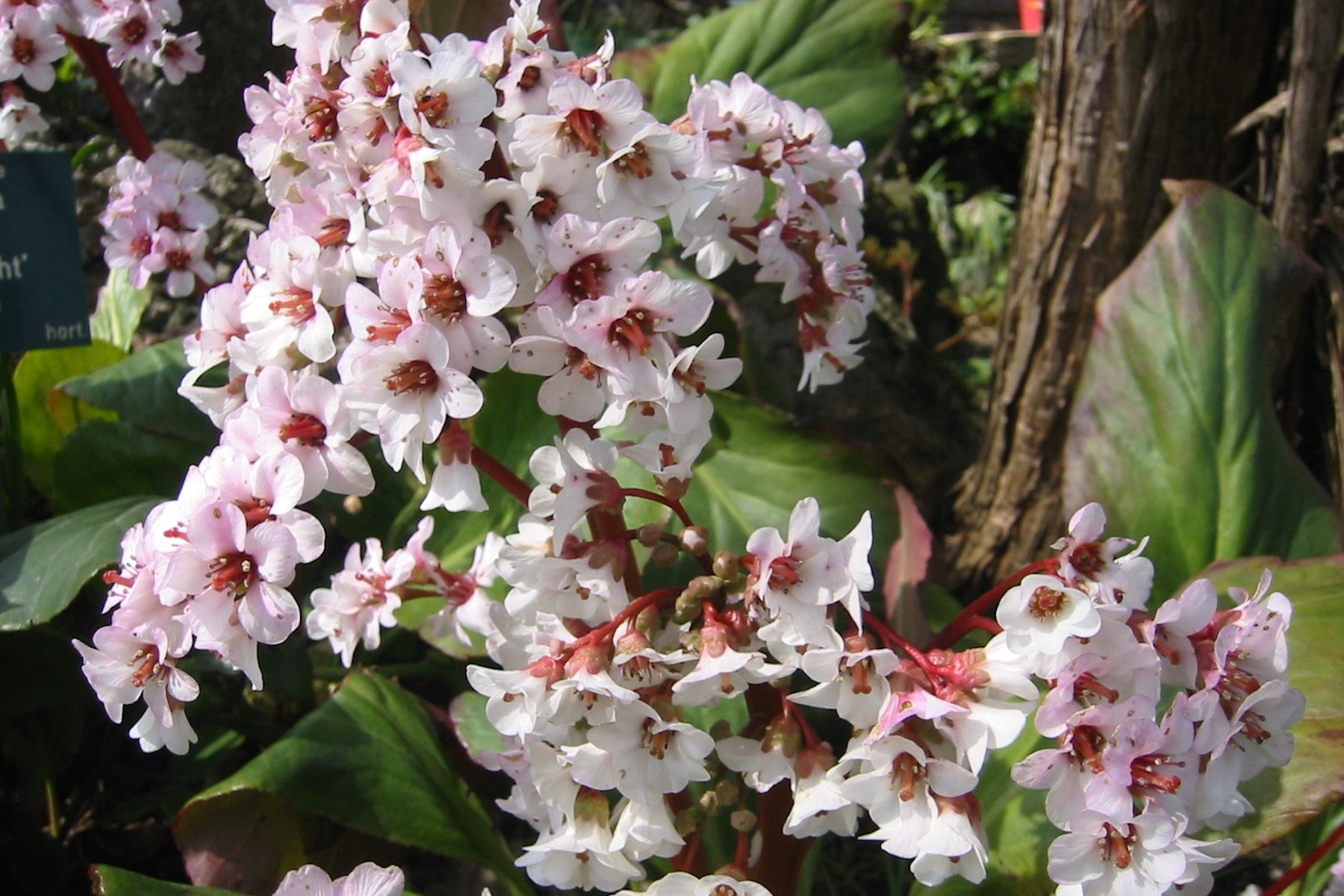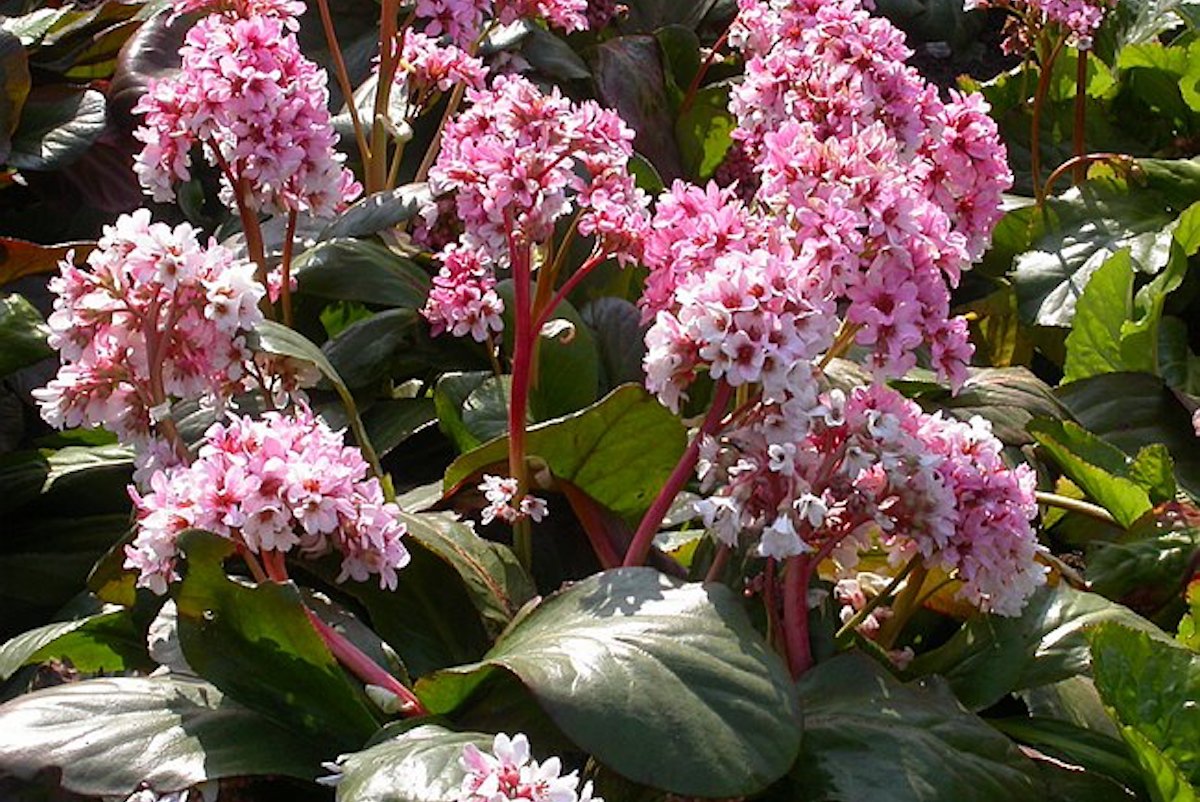Bergenia 'Silberlicht'
Approx. 0.5 litre pot
About this cultivar:
Bergenia 'Silberlicht' is a hybrid first introduced in the 1950s by the Arends Nursery in Ronsdorf-Wuppertal near Cologne, Germany. Pinkish-white flowers with red centres bloom in spring. Flowers emerge white, but acquire pink tones as they mature. Foliage turns maroon-purple as the season goes on, and the foliage retains that purple colour throughout winter. 'Silberlicht' means silver light, in possible reference to the pinkish-white flowers. First won the Royal Horticultural Society Award of Garden Merit in 1964.
- Position: Full sun, Partial shade
- Soil: Almost any soil - grows well in Ballyrobert!
- Flowers: May, June, July
- Other features: Royal Horticultural Society Award of Garden Merit (RHS AGM), Interesting Foliage or Fruit, Great Ground Cover
- Hardiness: H6 - Hardy in all of UK and northern Europe (-20 to -15°C), Fully hardy - grows well in Ballyrobert!
- Habit: Clump forming
- Foliage: Evergreen
- Height: 30 - 60 cm (1 - 2 ft)
- Spread: 30 - 60 cm (1 - 2 ft)
- Time to full growth: 2 to 5 years
- Plant type: Herbaceous Perennial
- Colour: White, purple, green
- Goes well with: Try Galanthus, Crocus tommasinianus and some woodland Anemones. At Ballyrobert we also like them in large groups, like ground cover.
About this genus:
Bergenia are clump forming herbaceous perennials that are quite common in cooler climates where they are renowned for their tropical appearance even though they don't like heat! The common names for Bergenia are pigsqueak (due to the sound produced when two leaves are rubbed together) and elephant's ears (due to the shape of the leaves).The creator of the more sober-sounding taxonomic genus name, Conrad Moench, honoured the German botanist and physician Karl August von Bergen by coining the name Bergenia in 1794.
Bergenia are valuable in the garden for many reasons. They produce attractive pink, purple or white flowers that attract many insects. Flowering occurs primarily in April, but some Bergenia will often give you a second flush later in the growing season. Bergenia also have bold, richly coloured, shapely, leathery, glossy, clumps of large, shiny, usually evergreen leaves. In the later half of the year, the leaves take on attractive tones of maroon, crimson, bronze, purple and even beetroot red.
Bergenia likes most soils that are not too dry. They prefer sun but can also grow in shady areas. If leaves are looking untidy or brown simply pluck them off to allow new ones to grow. Bergenia will slowly spread via rhizomes.
Good companions tend to be early bulbs. Try Galanthus, Crocus tommasinianus and some woodland Anemones. At Ballyrobert we also like them in large groups, like ground cover.




